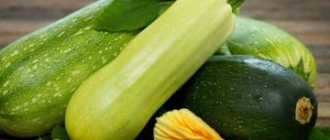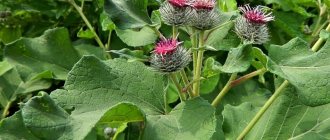Diseases of the digestive tract are characterized by inflammation of its mucous membrane. To treat the stomach in folk medicine, herbal preparations are often used. Mint for gastritis is a good helper. It soothes the irritated organ, regulates acid levels and restores the epithelium.
The antibacterial properties of the medicinal plant suppress the source of the disease, eliminating accompanying symptoms such as heartburn and cramps. Fragrant grass grows in every garden plot and is easy to care for. There are several types of it, which will allow you to select the necessary inflorescences for the corresponding manifestations of gastric ailments.
Useful properties of mint
The chemical composition of fragrant greenery contains essential oil - menthol. Most of it is contained in the leaves and stem, which need to be collected before the grass blooms.
This element is the most valuable in the product and has the following properties:
- antiseptic;
- antispasmodic;
- choleretic;
- sedative.
When treated with mint, inflammation, pain, pain in the epigastrium and duodenum are reduced. Patients note a decrease in attacks of nausea during gastritis. At the same time, digestion improves, abdominal discomfort goes away and the emotional background normalizes. The plant is also actively used for neuralgia and respiratory tract diseases.
In ancient times, it was generally accepted that fragrant herbs prolong the life and youth of the body.
Contraindications
Mint is suitable for the treatment of many diseases, however, be careful in the following cases:
- hypotension;
- phlebeurysm;
- individual intolerance.
Before use, be sure to consult your doctor. It is not always safe to use the plant in the presence of diseases of the gastrointestinal tract and without certain indications.
Benefits of peppermint for gastritis
Peppermint was bred by crossing two wild species. The main beneficial substance of the plant is menthol, which is part of the volatile essential oil in the leaves and inflorescences.
In folk medicine, mint is used as an anti-inflammatory and choleretic agent. Mint oil, tinctures and drops are industrially obtained from the leaves, stems, and inflorescences of plants. The components are used in medical practice, cosmetology, and the perfume industry. Mint leaves are used for culinary purposes for gastritis.
Use for gastritis
Decoctions and water infusions from the leaves and flowers of the plant are used for abdominal pain, flatulence, and bloating. A decoction of mint has a calming effect and helps with nervous excitability, characteristic of asthenic syndrome in gastritis.
The drink also has an antimicrobial and antiseptic effect and fights the causative agent of the disease.
Fresh juice squeezed from mint leaves has an antispasmodic and analgesic effect for gastritis, colitis, and gastric ulcers. Mint juice is a remedy against nausea, which manifests itself in gastritis with increased secretion and gastric ulcer.
Types of fragrant greenery
Mint can be cultivated or wild. In gastrotherapy, the following varieties are distinguished:
- Peppery. Used for high acidity. This species is the most popular among herbalists. Thanks to its analgesic and antibacterial properties, it disinfects the entire body. Aromatic teas can suppress attacks of nausea and stomach cramps.
- Field. A wild plant, however, it can be planted at home. The medicinal properties of the herb are used for chronic and acute conditions of the digestive tract. Field mint normalizes the functioning of the secretory glands. It effectively relieves pain and inflammation, eliminates bad breath.
- Lemon. Another name for this species is lemon balm. Its leaves are fragrant with a fresh citrus aroma. It is very useful for gastritis and pancreatitis, and is also effective for normalizing the patient’s emotional background.
- Swamp (ombalo). A herb with red or purple flowers and a nut-shaped fruit. Its decoctions have anti-inflammatory and antispasmodic properties. They increase appetite, but are contraindicated during pregnancy, as well as in children and people with kidney failure.
- Curly. Spearmint has beautiful leaves with wavy, curled edges. Grown for therapeutic purposes, it protects the stomach and esophagus from erosive manifestations, prevents vomiting and pain. Greens successfully restore the acid balance of all gastrointestinal organs.
- Oregano. This plant with pink inflorescences can only be found in ecologically clean areas and forest clearings. Oregano decoctions are used for the chronic form of the disease, however, there are contraindications: acute gastritis, stomach ulcer. It is not recommended for pregnant women to drink infusions. Wild mint has a strong antibacterial and analgesic effect. The plant is used in the treatment of pathologies of the gastrointestinal tract and respiratory system.
- Korean. This mint is often called “Tibetan lofant”. It exhibits high anti-inflammatory activity and neutralizes pathogenic bacteria in the gastric mucosa. This rare plant restores the digestive process and improves the absorption of nutrients.
Does mint tea spoil the “flying weather” for men? Why is mint called “feminine”?
Mint is a plant whose benefits and harms are not the same for representatives of different sexes. She provides great support to women in the area of health and beauty.
Qualities of mint that are useful for girls and women:
- treats stagnation of milk in a nursing woman: to get rid of lumps in the breast, you should apply a paste of mint leaves to the “bumps”;
- helps relieve the condition of painful and heavy periods;
- relieves symptoms of toxicosis during pregnancy;
- reduces the symptoms of menopause;
- can serve as an adjuvant for the treatment of inflammation “feminine style”;
- improves the condition of dry, colored hair;
- in the form of tonic and masks, it benefits “tired” skin - it refreshes, smoothes out fine wrinkles, and also eliminates greasy shine and tightens pores;
- slows down hair growth in “unnecessary” places (antennae, underarm hair).
Important! An expectant mother is allowed to drink mint only after consulting a doctor!
Although mint infusion is considered an effective hangover remedy, it is better for men not to partake in such a “drug.” Refreshing tea, when consumed regularly, negatively affects potency and excitability, as it reduces testosterone levels.
Use of aromatic plant
Mint has antibacterial properties, which makes it possible to exclude the very cause of gastritis - the Helicobacter pylori bacterium.
The healing qualities of mint for stomach ulcers are aimed at the entire gastrointestinal tract system. Menthol oil stimulates appetite and improves food absorption, thereby suppressing heartburn. The decoction can be taken in combination with other natural drugs, which enhances the therapeutic effect and brings great benefits.
Don't self-medicate! Before using the product, consultation with a specialist is required.
With increased acidity
High levels of hydrochloric acid contribute to the appearance of heartburn and belching against the background of gastritis. This is characterized by “hungry” pain and stool disturbances. The healing plant reduces the severity of these symptoms. However, it is necessary to take mint in small doses, as it provokes the secretion of gastric juices.
Use the following recipe for a medicinal drink:
- mint - 2 tbsp. l.;
- yarrow - 1 tbsp. l.;
- St. John's wort - 1 tbsp. l.;
- dill seeds - 1 tbsp. l.
Mix the ingredients, take 3 tbsp. l. dry mixture, add a liter of liquid and brew in a water bath for about an hour and a half. Strain the cooled drink and take on an empty stomach for 2 weeks.
In modern conditions, it is easier to make mint tea in a thermos, in which the herbs can be infused all night. Only fresh decoction should be used.
With low acidity
Gastritis with low levels of hydrochloric acid occurs with aching pain, constant burning and lack of appetite. In this case, mint-based tea will help. The healing drink stimulates digestion and eliminates unpleasant symptoms. To prepare it you will need:
- mint - 2 tbsp. l.;
- water - 1 l.
The leaves are steamed with a liter of boiling water and left for several minutes. Take in the morning on an empty stomach and in the evening before bed.
To enhance the therapeutic effect, chamomile, yarrow, knotweed and valerian are added to mint, mixed in equal proportions and steamed in a thermos overnight.
With atrophic gastritis
Stomach diseases with high acidity are often accompanied by thinning of the mucous membrane of the diseased organ. As a result, the diagnosis is complicated by the atrophic manifestation of gastritis, which is quite dangerous for the patient. At home, medicinal mixtures are prepared based on the following components:
- mint - 25 g;
- flax seed - 10 g;
- cumin - 25 g;
- yarrow - 25 g;
- St. John's wort - 50 g;
- plantain - 25 g;
- angelica - 25 g.
The ingredients for the collection are mixed, poured with a liter of liquid and brought to a boil. The cooled and strained mixture is taken on an empty stomach, a quarter glass per day.
With this disease of the digestive system, erosive manifestations are likely. Therefore, it is important to consult a doctor in a timely manner.
For irritable bowel syndrome
Research data from American scientists confirms the anti-inflammatory and antispasmodic properties of mint essential oil.
The main therapeutic component, L-menthol, has a softening effect on the stomach and intestines and eliminates unpleasant symptoms of the disease.
For reflux esophagitis
Traditional medicine knows many herbal recipes that can help in the treatment of reflux gastritis. One of the related plants of mint is lemon balm. It has a healing quality in the treatment of this pathology. To prepare the drug you need:
- chamomile - 2 tbsp. l.;
- flax seed - 2 tbsp. l.;
- lemon balm - 1 tbsp. l.;
- motherwort - 1 tbsp. l.;
- licorice root - 1 tbsp. l.;
- water - 500 ml.
Grind the ingredients and 2 tbsp. l. The resulting mixture is brewed with boiling water. Next, simmer the solution for 10 minutes over low heat and let it brew. The cooled broth is filtered and taken 50 grams 4 times a day.
Herbal infusion with lemon balm has anti-inflammatory properties. Medicinal tea for gastritis reduces pain and lowers stomach acidity.
Conclusion
Mint helps relieve abdominal pain, nausea, and flatulence. Mint can be used both for gastritis with high acidity and for gastric or duodenal ulcers.
Before using mint-based products, you must undergo examination and obtain permission from a specialist. A gastroenterologist will tell you whether it is permissible to take mint decoctions and infusions for a specific form of gastritis.
When starting to treat a disease with mint, you should not forget about following a diet and abstaining from prohibited foods.
Mint is one of the most popular medicinal plants. Many people brew it and drink it instead of tea in unlimited quantities, without even realizing that mint can be not only beneficial, but also harmful. In some cases, its advantages turn into disadvantages. What do you need to know about the properties of mint?
Harvesting the plant
Mint grows well in garden plots. Its cultivation does not require special knowledge and skills, since it is a rather unpretentious plant. However, there are wild species, such as oregano, which can only be found in forest clearings.
The time for collecting medicinal herbs is June, July. Until this moment, the plant will gain all its valuable properties. Dry the greens with the roots up, hanging by the stems. You can also simply lay it out in a darkened and well-ventilated room. The dried bush is placed in a fabric bag or glass container. The shelf life is 2 years. You can also buy dry mint already processed and packaged at the pharmacy if you did not have time to prepare it in time.
Secrets of brewing tea with menthol flavor
The standard method of brewing mint tea is to add 1 tbsp to 250 ml of boiling water. l. dry chopped mint. Infuse tea for 15 minutes. Mint water will be extremely tasty - 1-2 bunches of fresh herbs should be filled with 500 ml of clean water. Or you can just add 1 tsp. mint in black tea.
Other recipes are suitable for preparing a medicinal drink. To get an infusion that will help relieve heart pain, you should take 2 tsp. crushed leaves, brew 1 tbsp. just boiled water. Leave for 20 minutes. Strain, drink 150 ml 1-3 r. in a day.
To make a decoction, you will need 15 g of dried herb. It is poured with 1 tbsp. water. Boil for 10 minutes. Insist for half an hour. Take 1 tbsp. l. from 3 to 4 r. per day, preceding meals.
Mint recipes
In the treatment of gastritis, it is important not only to collect useful raw materials, but also to prepare them correctly. As a result of your efforts, you can get aromatic mint tea, infusion or decoction - a valuable drug that prevents complications of gastrointestinal pathologies.
We bring to your attention the simplest and most effective recipes.
Infusions
All parts of the fresh plant are suitable for infusion. Pour half a glass of boiling water over a teaspoon of herbs and leave for 30 minutes. Take the medicinal mixture 20 grams before meals.
To increase the therapeutic effect, it is recommended to add other herbs, such as St. John's wort, chamomile, yarrow and sage.
Decoctions
Both fresh and dried herbs are suitable for cooking. You need to add 10 grams of the mixture to a liter of boiling water and simmer in a water bath for about 15 minutes. Let the solution sit and cool.
At the same time, spearmint and Korean mint are taken only in the morning on an empty stomach, lemon balm - every 3 hours, peppermint - three times a day.
Teas
The easiest way to use a medicinal product is to add a couple of leaves to a teapot with regular tea and enjoy the aromatic drink morning and evening!
Since ancient times, the combination of chamomile and mint has been considered a cure for all ailments!
Traditional medicine recipes often help with illness. But they are not the main medicine.
How to cook mint for gastritis
Medicinal remedies for the treatment of gastritis are prepared from field and peppermint.
Infusion of mint leaves
To prepare the infusion, 5 grams of raw materials are poured with boiling water and infused for a quarter of an hour. After cooling, the infusion is filtered. Drinking the drink is allowed every 3 hours.
Herbal decoction
5 grams of fresh or dried raw materials are boiled in 1 liter of water for 15 minutes. Afterwards the decoction is infused for half an hour. You can take the infusion orally or use it for a bath: mint will relieve tension and eliminate the effects of stress.
Fresh mint infusion
200 grams of boiling water are used to brew 50 grams of fresh herbs. The mixture is infused for an hour. Take the infusion one tablespoon 3 times a day. The course of therapy can last from 10 days to several weeks. If necessary, it can be repeated several times a year.
Reviews of mint
My grandmother told me about the miraculous effect of fragrant teas. She often brewed a fragrant drink, explaining how useful this potion was. Now I am already an adult girl, but I still use mint when stressful situations or digestive problems arise.
Elena, 23 years old
Herbal preparations are better at fighting heartburn and pain than pharmaceutical products. Menthol infusion is always in my arsenal for overeating, burning and other unpleasant symptoms in the stomach. I recommend to everyone!
Margarita, 36 years old
Melissa has a gentler effect on the digestive organs. Pure mint is contraindicated, for example, in case of reflux esophagitis. I checked it from my own experience and the sensations were unpleasant. Therefore, it is necessary to strictly follow the instructions even for such a harmless herb.
Igor, 45 years old
I really like mint, but only as a seasoning for tea. I tried drinking it for gastritis, but this method did not help me. I can only get rid of the disease with medication.
Varvara, 31 years old
Using mint in the treatment of gastric pathologies is quite simple. However, it is important to use this medicinal plant correctly, based on the doctor’s recommendations and existing contraindications. Gastritis is a serious disease and the patient’s recovery is only possible with an integrated approach. Don't self-medicate! Be healthy!
Description and types of mint
The benefits and harms of mint do not depend on the variety, but the taste varies slightly. Wild plant varieties:
- Field mint grows in fields and sparse forests. It has a delicate aroma and taste. The menthol aroma is weak
- Catnip grows along roads, on hillsides, and in sparse forests. The taste and aroma has lemon, spicy notes. Loved by cats.
- Water mint grows in damp places. Strong menthol taste and aroma.
- Sweet mint is found in the Mediterranean and warm, humid places. The aroma is menthol, the taste is muted.
- Japanese mint grows in Japan, contains many essential oils, the taste and aroma of menthol is pronounced.
- Forest mint or oregano, oregano, grows in forests and clearings. Does not have menthol taste or aroma.
Garden plant varieties:
- Peppermint was developed in the 16th century in England. It has a bright, slightly bitter taste. The honey from the plant is also menthol.
- Spearmint grows wild in northern Africa. Cultivated in Russia, Europe and North America. The aroma is weak.
- Chocolate mint combines menthol, lemon and chocolate in its aroma. Loves sunny and humid places.
- Mexican mint, another name for lofant. Sharp spicy aroma, but without menthol overtones.
Important! The fragrant and cat varieties are considered wild, but they are grown in gardens. Peppermint is found growing wild near villages.
Mint is a perennial herb with a pleasant aroma that has many healing properties. The main component of the herb is menthol (essential oil), due to which it has a special aroma. The product also contains other substances:
- vitamins (B, C);
- tannins;
- flavonoids;
- carotene;
- betaine and other acids;
- minerals (phosphorus, magnesium, sodium, etc.);
- fats and protein compounds;
- vegetable fiber;
- resins;
- Sahara.
There are more than 25 species of this plant in the world. Each has a unique combination of essential oils and other components, and they differ in scent, leaf length and stem height. The most common type is peppermint, which is grown not only in garden plots, but also on an industrial scale.
Important! Due to its high menthol content, mint irritates the nerve endings and causes a feeling of cold and slight tingling. For this reason, the herb has an anesthetic property.
Chemical composition and calorie content of mint
The beneficial and harmful properties of this herb are determined by its chemical composition. Vitamins contained in the plant:
- A – 212 mcg;
- B1 – 0.082 mg;
- B2 – 0.262 mg;
- B5 – 0.338 mg;
- B6 – 0.129 mg;
- B9 – 114 mcg;
- C – 31.8 mg;
- RR – 1.706 mg.
Useful macro and microelements:
- calcium – 243 mg;
- magnesium – 80 mg;
- sodium – 31 mg;
- potassium – 569 mg;
- phosphorus – 73 mg;
- iron – 5.08 mg;
- zinc – 1.11 mg;
- copper – 329 mcg;
- manganese – 1.176 mg.
The calorie content of the plant is insignificant, only 70 kcal, which is useful for losing weight.
Important! If, after using the herb or extracts, dizziness, headache, convulsions, or exacerbation of chronic diseases occur, you should stop taking the plant and consult a doctor.
The use of mint in cosmetology
The wild plant is distinguished by its medicinal properties. There are several of its positive effects on the human body:
- antibacterial (antiseptic);
- choleretic;
- antispasmodic (pain reliever);
- sedative (calming).
Mint allows you to reduce the source of inflammation in the stomach, reduce pain thanks to the menthol included in the composition, promotes proper digestion and absorption of food consumed by the body, and also relieves stress as a sedative.











